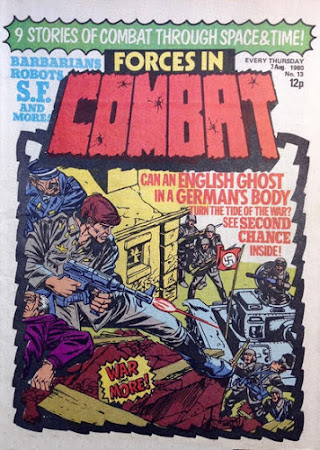Thanks to Charlie Horse 47 and Killdumpster for their sponsorship of this post, via the magic of Patreon.
***
We all know there's only one Spider-Man.
And it's me!
No it isn't. It's Peter Parker.
And we know that because, in late 1976, a brand new comic came along to tell us so.
That comic was the one whose cover is displayed to the left of this very post and it meant the wall-crawler now had three books hitting the racks each month. The other two being The Amazing Spider-Man and Marvel Team-Up.
It sat on those racks, bearing a cover that long-standing readers may have found oddly familiar, as it was basically a retread of the cover to Amazing Spider-Man #134.
Given the need to make a big splash with the readership, some of whom may never have read a Spider-Man tale before, it's hardly surprising Marvel elected to pit our hero against, not any old bum but one of the web-slinger's greatest foes of all time.
The, erm, Tarantula.
We begin with our hero in his Spider-Man guise, hanging around, taking red-hot action snaps of his college's vice-chancellor delivering a speech, to students, about budgets. Clearly, the wall-crawler knows the kinds of photos newspapers will pay big money for.
But, suddenly, it all gets even more exciting when a certain pointy-toed heel makes his arrival, abducting the vice-chancellor and scarpering with him, after teaching Spidey a lesson-or-two in how to fight.
With no clues as to his whereabouts, it seems the villain's gotten clean away but it's not long before the fickle finger of Fate leads to Peter Parker accidentally stumbling across the Tarantula's next crime.
This time, the mercenary's been ordered, by a mystery employer, to kill the mayor and make it look like a kidnapping gone wrong.
Needless to say, Spidey can't allow that to happen and rescues the mayor from his attacker but still fails to bring the wrongdoer to justice.
Now, not only is the villain gone but we're left none the wiser as to who his mystery employer is.
Well, we're not really. It's obvious to anyone with a functioning brain that he's the vice-chancellor who's faked his own kidnapping, in order to divert suspicion away from himself. We know this because it's hard to see why else he's in the story if he's not the man behind it all.
Of course, 14 years before all this, Amazing Adult Fantasy shook-up the world of comics, with the launch of Spider-Man upon the world, and things would never be the same again. Does this book do the same?
Not really. In all honesty, it's just a fairly standard-issue Spider-Man story of its era. It does set up what appears to be a story arc, involving the Tarantula and his employer but, other than that, there's little to distinguish it from anything that was happening in his main book at the time.
It's also a frustrating read because Spider-Man has ridiculous amounts of difficulty dealing with his foe who's just some bloke with stabby shoes. Time and again, our hero tells us how it'll be a miracle if he manages to survive against such a deadly opponent. At one point, we even have him dreading the thought of facing him again.
I mean, seriously, it's the Tarantula. Even I'd fancy my chances against him. If you're going to hook new readers on a book, I'm not sure having its hero be totally unable to win a fight with a non-entity is the way to do it.
There's also a major crime against logic, which has Spider-Man hanging around, in full view, taking the photos he plans to later sell as Peter Parker. I'm not sure that's the best way to maintain a secret identity.
But, speaking of Peter Parker, despite the comic being named after him, he's barely in the tale.
Still, at least while he's present, we do get a couple of scenes featuring Gloria Grant and MJ, the latter of whom is now dating Flash Thompson.
It's all written by Gerry Conway who always feels like he could knock out a competent Spidey story in his sleep, and it's drawn by Sal Buscema, about whom you could make exactly the same observation.
Personally, although I'm an admirer of Sal and his simple but clean story-telling, I've never been that big on him when it comes to Spider-Man, feeling his style lacks the idiosyncrasy the likes of Ditko, Kane and Andru brought to the strip.
So, it's OK but doesn't feel like as much effort's been put into it as could have been.
If one didn't know better, one might think the book was only launched as a way of making more money from a popular character, rather than because anyone involved believed the world desperately needed another book devoted to him.





















































